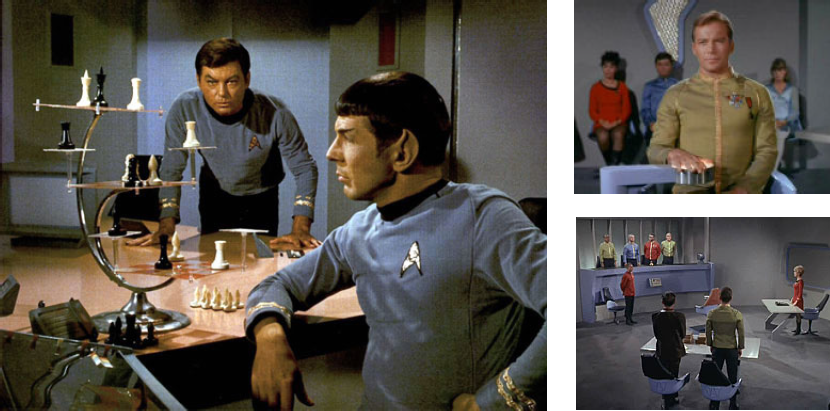New Forms of Expression and Interaction
(Recordness continued)
INLS 525: Managing Electronic Records
Week 2 (1/22)
Presenter Notes
Review
- 4 Characteristics of Records
- Yeo's definition
- PREMIS Data Model
- MA1: Lake v. City of Phoenix
Presenter Notes
David Lake v. City of Phoenix
- Court of Appeals, CV 07-0415, Opinion filed 13 Jan 2009
- State of Arizona Supreme Court, CV 09-0036 PR, Opinion filed 29 Oct 2009
Decision
- The record is the intellectual entity regardless of representation.
- Additional, although associated, information is not a part of that record.
Dissent
- The record is the document's original representation including "hidden" information.
Presenter Notes
O'Neill v. City of Shoreline
State of Washington Supreme Court, 82397-9, Opinion filed 7 Oct 2010
Is e-mail metadata a public record that must be disclosed under the Public Records Act?
Yes
An electronic version of a record, including its embedded metadata, is a public record subject to disclosure.
Does a request to see an e-mail inherently include a request to see metadata?
No
Metadata must be explicitly requested in order to trigger an agency's obligation to provide it.
Presenter Notes
Electronic Records as Documents
What are documents in a digital environment?
Fixity v. Fluidity
Presenter Notes
Genre
- "socially recognized types of communicative actions ... that are habitually enacted by members of a community to realize particular social purposes"*
- Defining features:
- Purpose
- Content
- Form
- Why are genres important?
* Yates, JoAnne, and Wanda Orlikowski. "Genres of Organizational Communication: A Structurational Approach to Studying Communication and Media." Academy of Management Review 17, no. 2 (1992): 299-326.
Presenter Notes
Affordances
... are the "qualit[ies] of an object, or an environment, which allows an individual to perform an action." (Wikipedia)
What sorts of affordances might a document or other digital object have?
Presenter Notes
Genres as Clusters of Affordances
- Habituated responses
- Embedded in specific sets of practices
- Fixity and fluidity are at play
Presenter Notes
Digital Genres & Affordances
- What characteristics to preserve?
- Aim for usability in "vernacular" use environment or authenticity through replication of old affordances?
Presenter Notes
Consider...
... an application you have used recently.
- What are the main affordances?
- Which facilitate good recordkeeping?
- Which hinder good recordkeeping?
Presenter Notes
Mutability
The ability to change information is an affordance we value for work.
There is an inverse relationship between mutability and trustworthiness.
Presenter Notes
Court Martial
Originally aired 2 Feb 1967

Presenter Notes
Trust
- A divided existence
- Chain of custody
- Authenticity
- Context
Presenter Notes
Managing Mutability
- Periodic snapshots
- Audit trails
Presenter Notes
Examples:
- Web
- Periodic snapshots - Internet Archive
- Audit trails - Wikipedia
- Databases
- Periodic backups
- Transaction logging
Presenter Notes
Value of Snapshots
- Potential for very detailed reconstruction (similar to value of system backups)
- Chain of custody begins as early as possible - before any changes are made
- If necessary, snapshots can be revisited to elicit more information that previous users have been able to elicit
Presenter Notes
Value of Audit Trail Approach
- Captures very explicit representations of what has changed from one version to another whereas snapshots require inferences of changes between captures (can make guesses, but won't have explicit "diffs").
Presenter Notes
Which Strategy? It Depends on...
- Transient or Additive systems (e.g. U.S. Code v. U.S. Constitution)
- Raw size of files (is a full copy each time feasible or overly expensive)
- How often changes occur
- How easy changes are to detect - e.g. for GIS data, providers often don't advertize each change; with web content, you only know about the state of pages when visited, not things that happen in between
- How easy added/changed data are to get (e.g. if you just get a floppy, that's all you have)
- Underlying structure of content (e.g. changes to fields in a relational database vs. converting document from Word to PDF)
- How tightly coupled the different files are (e.g. if tightly coupled, might be desirable to create a complete snapshot of the directory, rather than doing versioning at file or file component level)
- What you're actually trying to document